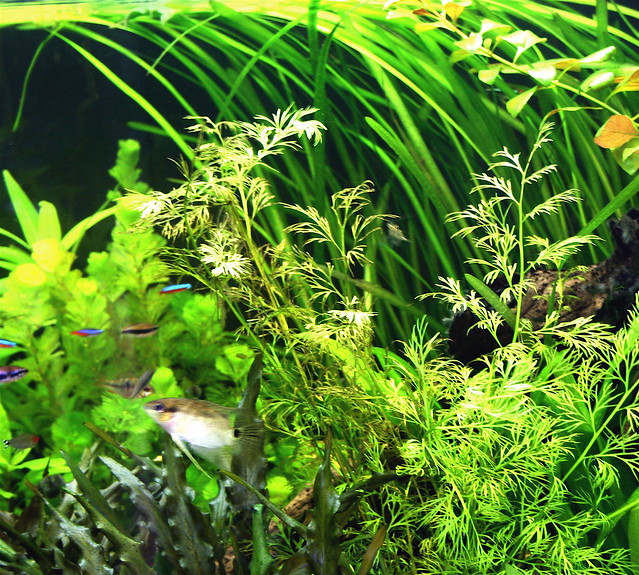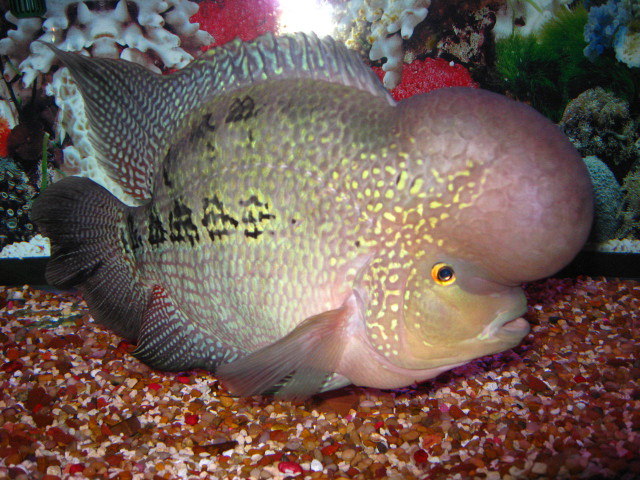 |
| Photo: Wikipedia (CC) |
To get you started, here is a concise guide to freshwater puffer fish and what you need to do to keep it healthy and happy.
Know Your Puffer
A lot of pet shops often mislabel their fish. In fact, some store owners are really not familiar when it comes to puffers. They do not know how to distinguish freshwater varieties from brackish or marine species. It is your responsibility to do the preliminary research. You have to know the different freshwater species of puffer fish including their habitat requirements, diet, behavior, and proper care.
Basically, there are at least 40 species of freshwater puffers. However, only a few of them can be found commercially. To make things simpler, it is advisable to narrow down your options to the common puffer fish available in stores and pet shops.
1. Carinotetraodon Travancoricus
This specie is generally known as the Dwarf puffer fish. In some stores, it is labeled as BB puffer or Pea puffer. As the name implies, it is a small puffer fish that grows to about 22 millimeters or less than one inch. It normally has a yellowish color with spots of green and black.
The Dwarf puffer requires a tank that can filled with at least 10 gallons of water. You can make this puffer fish happy if its tank has a sandy substrate with well designed hiding places such as vegetation or big rocks. Like most puffer fish, the Dwarf can become extremely territorial. However, it can coexist with its own kind and could live peacefully with other tank mates.
Dwarf puffers love to feed on small bits of snails, shrimps, and blood worms. Feeding should be twice a day and adults must be given a regular diet of shelled foods so that their beaks will not grow too big.
2. Monotrete Turgidus
Another cute little puffer fish is the turgidus or commonly known as Brown puffer. This is a very personable fish but it is less active than the Dwarf species. It prefers to lurk and hide at the bottom of the tank and will only show itself when it is feeding time.
The Brown puffer grows to about six inches. Its back is greenish with black spots. The belly side is usually brown to grayish with no remarkable spots. This puffer fish thrives well in a 20-gallon tank with water pH level of about 6.0 at 80 degrees Fahrenheit. It prefers sandy or pebbly substrate with lots of vegetation and rocks where it can hide during the day. You have to take note that a Brown puffer is a terrible territorial fish. It is very aggressive and will probably eat other tank mates if given the chance.
You can feed this puffer fish with blood worms, chunks of fish meat, shrimps, and krill. As it grows older, you have to feed it with crab legs, clams, or mollusks.
3. Tetraodon Lineatus
Although the lineatus is rarely kept by hobbyists, you may want to try keeping this kind of puffer fish if you love to face big challenges. This specie is generally known as the Nile puffer or Fahaka. It has distinct yellowish lines on its body and can grow so big that a standard tank may not be enough for it. An adult Fahaka is about 18 inches long so you need a wider tank that can be filled with at least 150 gallons of water.
The Fahaka puffer is endemic to Africa, more specifically in the Nile River and its tributaries. However, you could find this fish in some exotic pet shops. This freshwater puffer fish will look marvelous in your aquarium but remember that it requires extra attention and maintenance.
The Fahaka lineatus is known for its extreme aggressiveness and territorial behavior. It will hunt its tank mates and eat them. You can feed this puffer with crustaceans. It also loves snails, shrimps, fish fillet, blood worms, wrigglers, and feeder insects. To make sure that its beak will not grow too big, you should give your Fahaka a regular diet of crab legs, clams, and other shelled feeds.
Additional Tips When Keeping Freshwater Puffer Fish
As stated earlier, some stores often mislabel their freshwater puffers. So you have to watch out for the Green Spotted Puffer (GSP), a brackish-water fish but commonly labeled as freshwater specie. The GSP has distinct green spots on its body. A full-grown adult is about 6 inches long. Because it thrives in brackish water, it will die if you put it in a freshwater tank. If you already have a GSP, make sure to increase the level of water salinity in your tank.
When introducing your puffer fish to its new environment, make sure that it is properly acclimatized. Keep the fish in its plastic bag and allow it to float in the tank for about 15 to 20 minutes to level the water temperature. If you will not do this, your puffer fish could die from shock.
Lastly, do not induce your puffer fish to inflate itself. This is stressful and hazardous for your fish. A puffer inflates its body as a form of defensive action especially when it feels threatened. This action brings considerable amount of stress to your fish which could be harmful. But don't worry because almost all puffer fish will inflate themselves if they want to. Fish enthusiasts usually call it "practice puffing" and it is delightful to see. Be sure to keep your digital camera ready so that you can take good photos when your puffer practices its puffing ability.
Keeping freshwater puffer fish is a good hobby. But always remember that you have to take good care of your puffer to keep it healthy and happy. You have to give ample space and clean habitat for your fish. Most importantly, feed your puffer fish with nutritious and delectable seafood.







